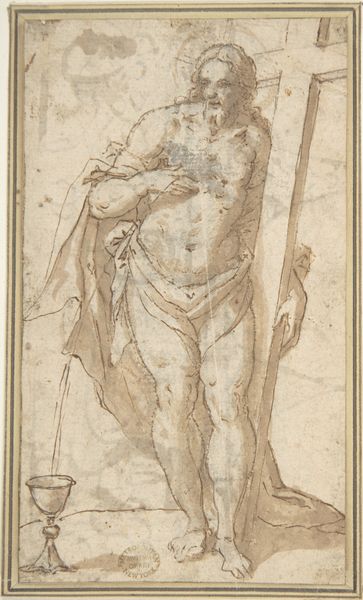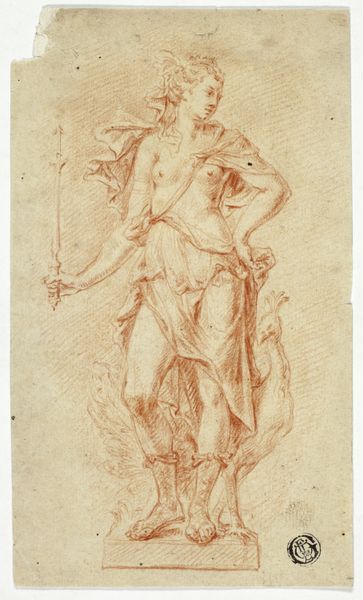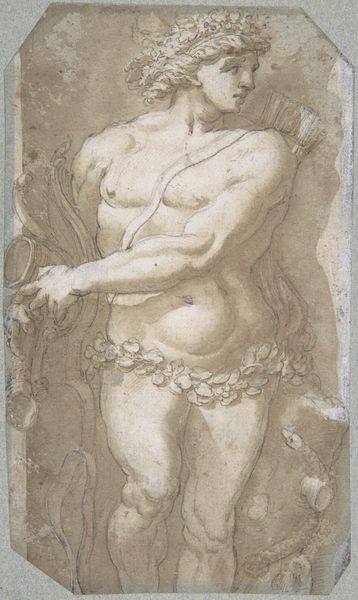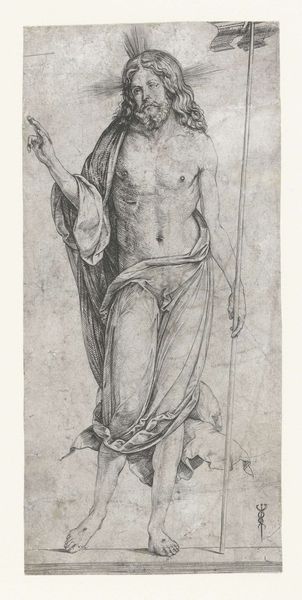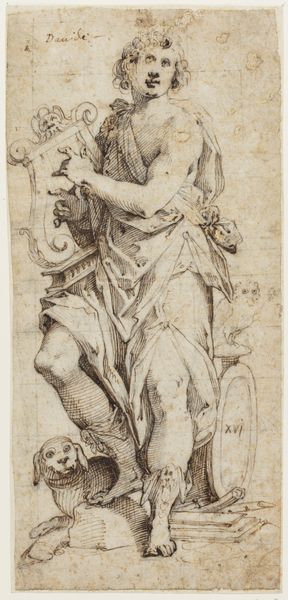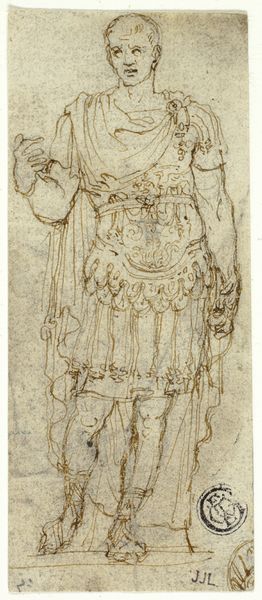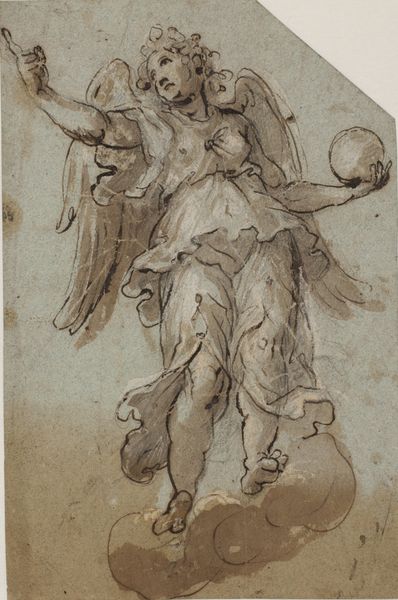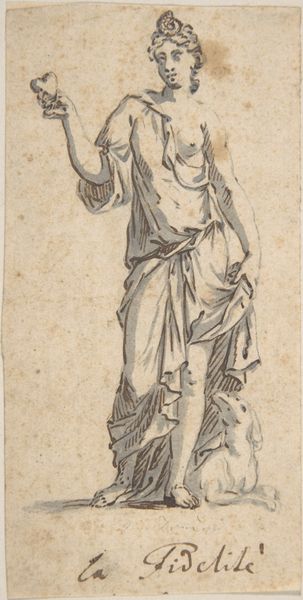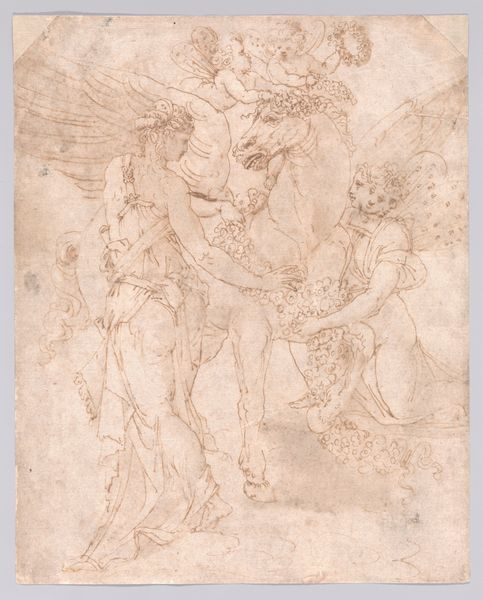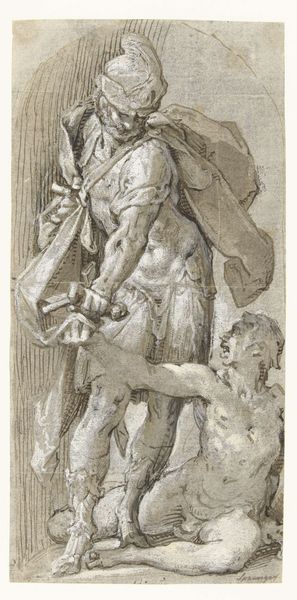
drawing, print, paper, ink, pencil, chalk, pen, charcoal, black-chalk
#
portrait
#
drawing
#
baroque
# print
#
charcoal drawing
#
figuration
#
paper
#
oil painting
#
ink
#
pencil
#
chalk
#
pen
#
charcoal
#
history-painting
#
black-chalk
Dimensions: 322 × 176 mm
Copyright: Public Domain
Editor: This is Guido Reni's "St. Michael Archangel and the Devil," a drawing that appears to be rendered in charcoal and chalk. It gives me the sense of preparatory sketch, full of movement. What do you see in it? Curator: Immediately, I observe the dynamism achieved through the stark contrast in shading. The robust figure of St. Michael is skillfully illuminated, set against a more gestural depiction of the defeated Devil. Consider how the lines, predominantly diagonals, contribute to the feeling of forceful descent. Editor: I see that too! The Archangel seems almost frozen mid-strike. But what does that say about the function of this piece, in relation to the intended meaning or interpretation? Curator: Functionality need not preclude meaning. We see an exploration of form and light— a formal exercise. Observe the artist’s anatomical precision juxtaposed with looser renderings; Reni seems preoccupied with the fall of drapery, and musculature rendered for the divine subject. Do you agree this formal juxtaposition is what dictates its lasting quality? Editor: Yes, the treatment of the body is interesting, but do you think that maybe we're missing out by overlooking possible iconographic components related to morality? Curator: The immediate reading aligns with the Archangel's triumph of good over evil, but this interpretation doesn’t come from outside its form, but only after a close consideration of line, and tone that establishes clear distinction of saint from sinner, thus rendering him more divinely noble than Devil. The composition guides the meaning through contrasts. Editor: I understand now, that by carefully evaluating its lines and the ways they are constructed, we can see that those compositional features guide the ultimate meaning, that are revealed just by form. Curator: Precisely! Close inspection enables a robust evaluation of form and function and their relation to each other.
Comments
No comments
Be the first to comment and join the conversation on the ultimate creative platform.
